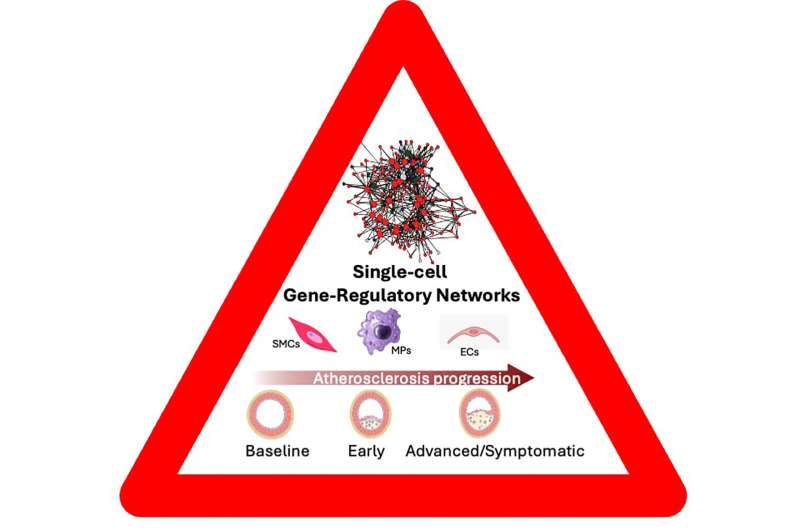This article has been reviewed according to Science X's editorial process and policies. Editors have highlighted the following attributes while ensuring the content's credibility:
fact-checked
peer-reviewed publication
proofread
New mechanisms in the development of stroke discovered

A group of researchers from the University of Tartu and international scientists discovered new mechanisms of how stroke occurs by studying changes in mouse and human cells. The study, published in Circulation Research, lays the foundation for new, more precise treatment methods and better diagnostics, which could improve cardiovascular health in the future.
One of the authors of the study, a Ph.D. student of Faculty of Medicine of University of Tartu Katyayani Sukhavasi said that every five minutes, someone suffers a stroke resulting in brain bleeding or ischemia. Strokes affect people of all ages.
"Consequently, many people die or get life-long disabilities. Hardening of the arteries, called atherosclerosis, is a major cause of stroke. Critical for this process are the various types of cells in the vascular wall, mainly endothelial cells, smooth muscle cells and different forms of immune and inflammatory cells," he said.
In the current study, the team of Giuseppe Mocci, Katyayani Sukhavasi, Arno Ruusalepp, Heli Järve, and Johan Björkegren utilized single-cell RNA sequencing (Smart-Seq2) to generate the deepest multi-species single-cell omics dataset of atherosclerosis to date.
Next, by applying advanced bioinformatic analysis to this dataset, the authors revealed cell-specific gene expression patterns underlying the transformation of vascular cells leading to advanced atherosclerosis.
Besides successfully reidentifying vascular cell subclusters identified earlier by others, the authors also markedly expanded the gene content of three distinct smooth muscle cell subclusters associated with conversion to an osteogenic phenotype during the advanced stages of atherosclerosis.
"In parallel, three macrophage subclusters associated with proinflammation and Trem2-rich lipid content in advanced atherosclerosis were identified," said Sukhavasi.
Giuseppe Mocci from Karolinska Institutet mentioned that by uniquely integrating these six subclusters with 135 human gene-regulatory networks (GRNs), the study pinpointed several GRNs with key disease drivers responsible for vascular cell transformation leading to symptomatic carotid stenosis.
Next, by uniquely integrating these six subclusters with 135 human gene-regulatory networks (GRNs), the study pinpointed several GRNs with key disease drivers responsible for vascular cell transformation leading to symptomatic carotid stenosis.
Dr. Ruusalepp said that combined bulk and single-cell RNA sequencing data from different species will provide information about the biological mechanisms that cause complex diseases, such as stroke.
Ruusalepp said, "Such an approach allows us to find key locations in gene networks that are likely to be more effective treatment targets than to try the traditional one-gene-by-gene approach, especially in complex diseases."
Dr. Järve added that this research combines genomics, clinical medicine and public health. Real change requires the cooperation of all parties.
"By understanding the molecular mechanisms of symptomatic atherosclerosis, our research lays the foundation for new more targeted therapies and improved diagnostics of stroke, and thus, may in the longer perspective, improve cardiovascular health for millions of people worldwide," emphasized Dr. Björkegren from Karolinska Institutet.
More information: Giuseppe Mocci et al, Single-Cell Gene-Regulatory Networks of Advanced Symptomatic Atherosclerosis, Circulation Research (2024). DOI: 10.1161/CIRCRESAHA.123.323184





















